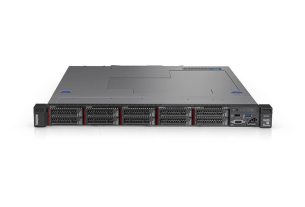
The Art Of Precision: A Guide To Food Label Printing
Key Takeaways:
- The Food and Drug Administration (FDA) has strict regulations for food labeling, and accurate printing is crucial for compliance and consumer safety
- Inaccurate food labels can lead to legal issues, fines, and damage to brand reputation
- Accurate food label printing helps create an authentic brand identity and communicates product quality
- Choosing the right font, color, and design elements enhances legibility and visual appeal of food labels
- Digital printing and variable data printing offer precision, customization, and cost-effectiveness
- Label materials should be sustainable and functional, considering packaging requirements and consumer preferences
- Optimal label placement and size, quality control, and print finishes enhance visibility and durability
- Continuous adaptation to advancements in printing technologies and sustainability practices is necessary in food label printing
- The Importance of Accurate Food Label Printing
The world of food packaging is highly regulated, and one aspect that demands meticulous attention is food label printing. Accurate and precise labeling is crucial for consumer safety, legal compliance, and brand reputation. In this section, we will explore the reasons why accurate food label printing is essential.
1 Understanding FDA Regulations for Food Labeling
The Food and Drug Administration (FDA) in the United States has established strict regulations for food labeling, including mandatory information that must be included on the labels of packaged food products. These regulations ensure that consumers have access to important information about the contents of the products they purchase, such as the ingredients, nutritional value, allergens, and any potential health risks.
Accurate food label printing is crucial to comply with these regulations and provide consumers with the necessary information to make informed choices about the food they consume. Failure to adhere to FDA regulations can result in legal consequences, including financial penalties and recalls of non-compliant products, so that is why it is very important to have a professional food label printer.
2 Why Precision Matters: Avoiding Legal Issues and Fines
Precision in food label printing is not only important to comply with regulations but also to avoid legal issues and fines. Inaccurate or misleading information on food labels can mislead consumers and potentially pose health risks. Moreover, false claims or inadequate warnings can result in lawsuits and damage the reputation of the brand.
By ensuring accurate food label printing, companies can mitigate the risks of legal challenges and protect their brand integrity. This involves meticulous attention to detail, from verifying ingredient lists to ensuring accurate nutritional information and allergen warnings.
3 Creating an Authentic Brand Identity with Accurate Food Labels
Accurate food label printing goes beyond legal compliance and risk mitigation; it also plays a crucial role in creating an authentic brand identity. Food labels are often the first point of contact between consumers and products, and they serve as powerful marketing tools.
By investing in precision food label printing, companies can create visually appealing and authentic labels that reflect their brand values and product quality. Thoughtful typography, design elements, and color choices can help convey the desired brand image to consumers.
- Mastering the Science of Food Label Printing
Food label printing involves both art and science. In this section, we will delve into the science behind creating effective and visually appealing food labels.
1 Choosing the Right Font and Typography for Maximum Legibility
The choice of font and typography in food label printing has a significant impact on legibility and ease of reading. It is important to select fonts that are clear, easy to read, and appropriate for the product and target audience. Some key considerations include font size, spacing, and the use of bold or italic styles for emphasis.
Additionally, it is crucial to ensure that the font colors contrast with the label background to enhance readability. A legible font ensures that consumers can easily grasp important information about the product, including ingredients, nutritional facts, and usage instructions.
2 Color Psychology: Harnessing the Power of Color in Food Packaging
Color plays a vital role in food packaging and labeling as it can elicit specific emotions, influence purchasing decisions, and communicate information. Understanding color psychology and its impact on consumer behavior is crucial for effective food label printing.
For example, warm colors like red and orange can stimulate appetite, making them suitable for labels of food products. Conversely, cool colors like blue and green can convey a sense of freshness and health, making them appealing for natural and organic products.
When designing food labels, it is important to consider the target audience and the desired perception of the product. Colors should align with the brand identity and evoke the desired emotions in consumers.
3 Graphic Design Elements: Creating Eye-Catching Food Labels
In addition to fonts and colors, graphic design elements play a crucial role in creating eye-catching food labels. Visual elements such as images, illustrations, and logos can enhance the overall appeal of the label and draw consumers’ attention.
However, it is important to strike a balance between visual appeal and clarity of information. The design elements should complement and enhance the readability of the label rather than overwhelm it. It is recommended to work with professional graphic designers who have expertise in food label printing to create visually appealing and informative labels.
- Cutting-Edge Technologies in Food Label Printing
The world of food label printing is constantly evolving, thanks to advancements in technology. In this section, we will explore some cutting-edge technologies that are revolutionizing the industry.
1 Digital Printing: The Future of Precision and Customization
Digital printing has emerged as a game-changer in the world of food label printing. Unlike traditional printing methods, digital printing offers greater precision, customization, and cost-effectiveness. It allows for variable data printing, which means each label can be uniquely printed, enabling personalized packaging and promotional messages.
Furthermore, digital printing eliminates the need for printing plates, reducing setup costs and enabling faster turnaround times. This technology also allows for on-demand printing, minimizing inventory costs and reducing waste.
2 The Advantages of Variable Data Printing for Food Packaging
Variable data printing is a revolutionary technology that enables customized printing of labels. This technology allows for the incorporation of unique QR codes, barcodes, or serialized numbers on each label. Such information can be used for product traceability, anti-counterfeiting measures, and targeted marketing campaigns.
Variable data printing enhances consumer engagement by enabling interactive packaging experiences. For example, a QR code on a food label can lead consumers to online recipes, product information, or brand stories.
3. Innovation in Label Materials: From Eco-Friendly to Functional
The choice of label materials is crucial for both sustainability and functionality. With increasing consumer concerns about the environment, eco-friendly label materials have gained popularity. Biodegradable and compostable label materials, made from renewable resources, are now widely available.
In addition to sustainability, label materials can also serve functional purposes. For example, advanced label materials are available that can resist moisture, withstand extreme temperatures, or provide tamper-evident features for added product security. Choosing the right label material involves considering the product’s packaging requirements, storage conditions, and consumer preferences.
- Tips and Tricks for Perfect Food Label Printing
While understanding the importance of accurate food label printing and mastering the science behind it is crucial, implementing best practices is equally important. In this section, we will discuss some tips and tricks to achieve perfect food label printing.
1 Best Practices for Label Placement and Size
Label placement and size play a significant role in ensuring the visibility and readability of food labels. It is essential to choose an appropriate label size that accommodates all the required information without overcrowding the design.
Label placement should be strategic, considering factors such as the shape of the packaging, potential obstructions, and ease of reading for consumers. Conducting thorough testing and prototyping can help determine the optimal label placement and size for maximum effectiveness.
2 Quality Control: How to Avoid Common Printing Errors
Quality control is essential to avoid common printing errors that can compromise the accuracy and integrity of food labels. Errors such as misaligned text, smudged ink, or incomplete printing can lead to confusion or misinterpretation of crucial information.
Implementing rigorous quality control processes, including regular checks throughout the printing process, can help identify and rectify any errors before the labels reach the market. Conducting visual inspections, reviewing proofs, and performing color accuracy tests are some of the practices that can ensure high-quality food label printing.
3 Print Finishes and Coatings: Enhancing the Look and Durability of Labels
Print finishes and coatings can add the finishing touch to food labels, enhancing their appearance and durability. Various options are available, including gloss, matte, or satin finishes.
Gloss finishes provide a shiny and reflective look, making colors appear more vibrant. Matte finishes offer a subtle and elegant appearance, reducing glare and fingerprints. Satin finishes strike a balance between gloss and matte, providing a smooth and sophisticated look.
In addition to finishes, coatings can be applied to food labels to improve durability and protect against moisture, scratches, or fading. Adding varnishes or laminates can extend the life of the labels, ensuring they remain intact and legible throughout the product’s shelf life.
Conclusion
Accurate food label printing is of utmost importance for legal compliance, consumer safety, and brand reputation. By understanding FDA regulations, mastering the science behind food label printing, embracing cutting-edge technologies, and implementing best practices, companies can create visually appealing and informative labels that resonate with consumers.
Striving for precision in food label printing not only ensures compliance with regulations but also communicates authenticity and establishes a strong brand identity. By continuously staying updated with advancements in printing technologies and incorporating sustainability practices, food label printing can evolve to meet the changing needs and expectations of both consumers and regulatory authorities.
FAQ
Question: What are the consequences of inaccurate food label printing?
A: Inaccurate food labels can lead to legal issues, fines, and damage to brand reputation.
Question: Why is precision important in food label printing?
A: Precision in food label printing is important to comply with regulations, avoid legal issues and fines, and create an authentic brand identity.
Question: How do font and typography choices impact food label legibility?
A: Font and typography choices impact legibility by considering factors like font size, spacing, emphasis, and contrast with the label background.
Question: What role does color psychology play in food label printing?
A: Color psychology helps evoke specific emotions, influence purchasing decisions, and communicate information effectively through food labels.
Question: How do graphic design elements enhance food labels?
A: Graphic design elements like images, illustrations, and logos enhance the visual appeal of food labels while ensuring clarity of information.
Question: What are some cutting-edge technologies in food label printing?
A: Cutting-edge technologies include digital printing, variable data printing, and innovative label materials that are sustainable and functional.
Question: What are some tips for perfect food label printing?
A: Tips include strategic label placement and size, rigorous quality control, and the use of print finishes and coatings for enhanced durability and appearance.
Question: How does accurate food label printing contribute to brand reputation?
A: Accurate food label printing communicates authenticity and helps establish a strong brand identity with consumers.
Useful Resources








